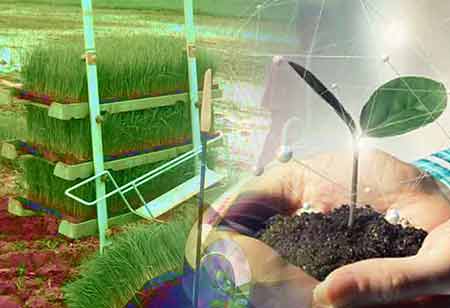Thank you for Subscribing to Agri Business Review Weekly Brief
Analysis Of The Economy Of Organic Farming
We know that organic products usually cost more than their traditional counterparts at grocery stores and local farmers’ markets,

By
Agri Business Review | Thursday, September 01, 2022
Stay ahead of the industry with exclusive feature stories on the top companies, expert insights and the latest news delivered straight to your inbox. Subscribe today.
A new branch of economics would like to recognize how we benefit from natural systems as a form of capital, which they’ve dubbed natural capital.
FREMONT, CA: We know that organic products usually cost more than their traditional counterparts at grocery stores and local farmers’ markets, but does that mean that organic agriculture is more costly than traditional overall? Though multifaceted and complex, experts have found answers are surprisingly consistent.
Mainly, organic agriculture appears to be a more efficient economic system, generating a profit and reducing the sort of environmental impacts (often thought of as “hidden costs”) that end up costing consumers in other ways.
Profitability Of Conventional Vs. Organic Farming
A solid base of studies suggests organic is equal to or more productive than conventional farming. Part of that competitive edge originates from the premium price – driven by consumer demand – that organic farmers can get for their products (though even when profits are adjusted for 50% of the current organic premium, most studies still show organic agriculture coming out ahead).
One of the most constant myths such studies consistently debunk is that organic systems cannot reach the same yields as conventional systems. On the contrary, after a transitional period of 3 to 5 years, organic systems can produce up to 95% of conventional yields. Moreover, organic farming is less dependent on fossil fuels, expensive inputs, and annual loans, making it less vulnerable to financial market wavering.
Organic is a low-waste system that stresses quality over quantity, meaning it uses less land for the same profit. Traditional crop subsidies exacerbate the problem, incentivizing farmers to grow more than they can sell, which reasons excess pollution, overuse of resources, and food waste.
Natural Capital
In classic economics, capital is outlined as money, machinery, tools, or other physical assets that support increasing an entity’s wealth. For an investor, that would be money employed to buy stocks or bonds to grow the initial investment over time. For a farmer, capital means tractors, greenhouses, or hand tools – things that can be used repeatedly to facilitate profit and growth.
A new branch of economics would like to recognize how we benefit from natural systems as a form of capital, which they’ve dubbed natural capital. Natural capital incorporates a mind-boggling array of ecosystem services and resources the natural world provides, some of which we have yet to discover.
Think trees producing oxygen and capturing pollutants from the air, wetlands filtering water, insects pollinating plants, and the incredible biodiversity of a place like the Amazon rainforest producing new medicines. Mother Nature does a great deal for us. The natural capital movement would like to quantify those values more easily and incorporate them into the traditional economic schemes that do not account for them.
Organic Farming & Natural Capital
As discussed, organic farming can stand its ground under traditional economic evaluations. Still, when you also start incorporating natural capital values, organic becomes the clear winner for long-term profitability. Let’s see a few examples of how organic uses and increases various natural capital functions:
• Adding organic matter to the soil every year (a basic organic practice) increases the soil’s ability to store carbon dioxide. While traditional farming has long been the recipient of federal crop subsidies, there’s a new trend toward paying farmers for carbon sequestration, efficiently acknowledging the economic benefit of high-organic-matter soils.
• Organic matter in the soil also enhances the soil’s water holding capacity, decreasing pressure on water resources and making organic farms more resilient to drought. As water costs money (and increasingly so), drought-tolerant farming systems mean cheaper food production over time.
• Biodiversity on organic farms provides myriad financial benefits. A diverse crop system resources a succession of blooms that can feed insect populations (and offer them habitat) year-round. These advantageous insects help keep down harmful insect populations, reducing or eliminating the need for pesticides and providing pollination services to raise harvest yields.
• Genetic diversity on organic vegetable & seed farms plays a well-endowed gene bank for potential new varieties that will be resilient against future environmental transformations, insect populations, and diseases. This service is vital to global food security, not to refer to tasty food!
And that’s just the start of the list. Natural capital is a comparatively new field of study, and economists and scientists are just beginning to unpack how we can attribute values to it within agricultural systems. As we discover more about the economics of natural capital and organic agriculture, we will convince more farmers to make the switch, raising the world’s profits of biodiversity, nutritious food, and healthy ecosystems, farm by farm.





